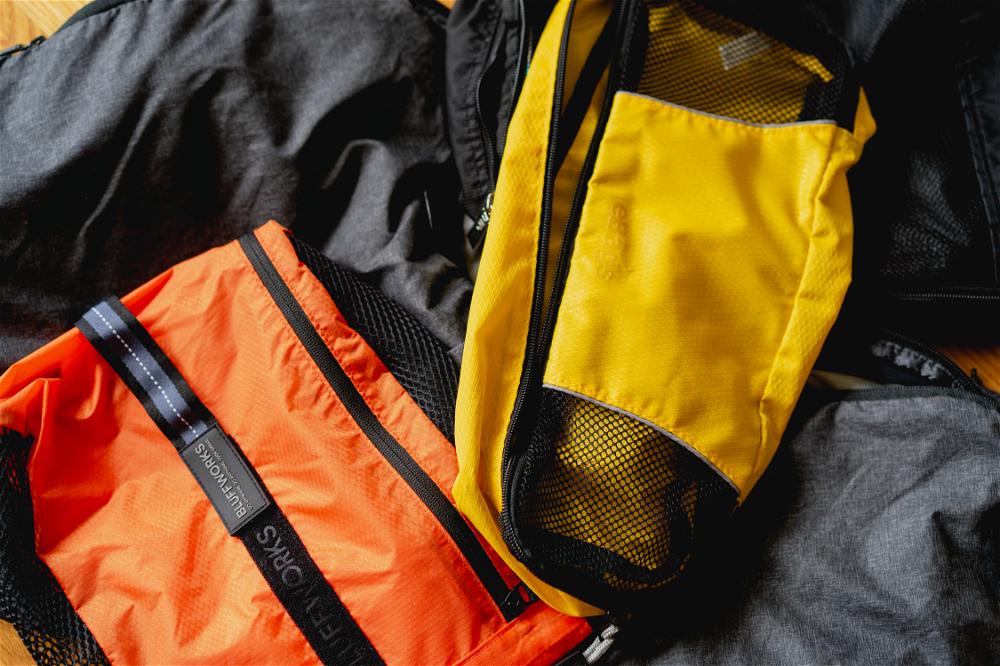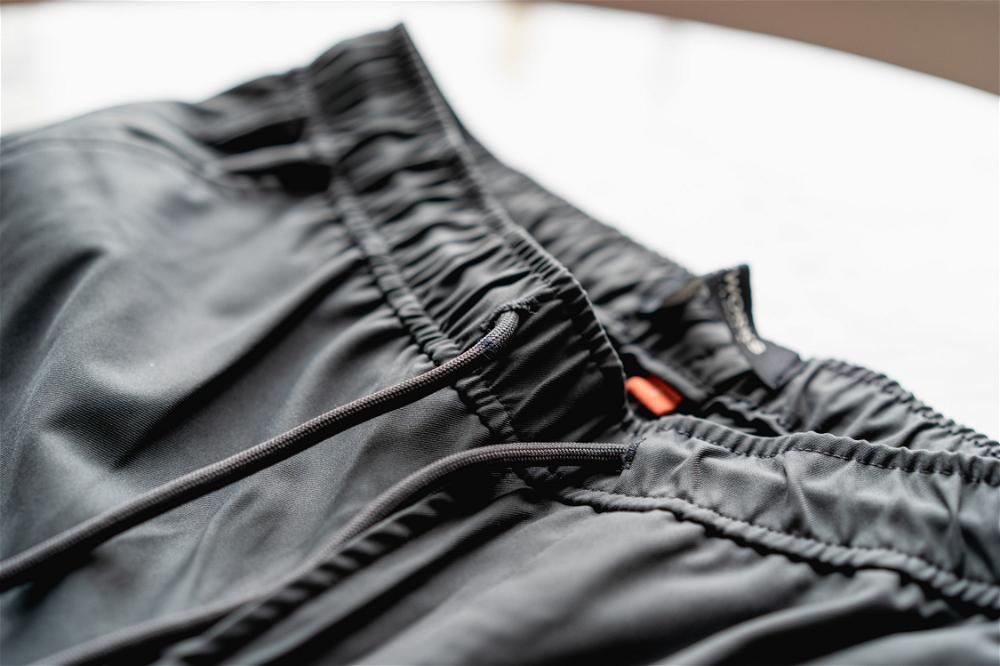Baby Carriers Review Criteria

See how we score baby carriers across detailed criteria with weighted ratings.
This article may contain affiliate links. We earn a small commissions when you purchase via those links — and it's free for you. It's only us (Becca & Dan) working on this website, so we value your support! Read our privacy policy and learn more about us.
Table of contents
- Scoring Overview
- Child comfort (13%)
- Parent comfort (13%)
- Safety & stability (16%)
- Ease of use (12%)
- Portability & storage (10%)
- Heat management & breathability (7%)
- Durability under real travel (7%)
- Cleanability & maintenance (7%)
- Adjustability as kids grow (5%)
- Versatility for different carrying positions (4%)
- Travel-day convenience (4%)
- Overall value for price (2%)
- Related Reviews
- Where to go next
This page details the specific criteria we use when reviewing baby carriers. Each criterion has a weight that contributes to the overall score. Learn more about how our scoring system works.
Scoring Overview
Each criterion below is weighted as a percentage of the total score. We evaluate each product on a scale of 1 to 5 for every criterion, then multiply by the weight to calculate the final rating.
Child comfort (13%)
Can your baby nap comfortably in this carrier? I’m evaluating proper ergonomic M-position hip support because that’s critical for healthy development. I’m checking neck and head support for infants since newborns need that extra security. I’m testing seat width adjustability to see if it accommodates growing babies. I’m assessing breathability against baby’s skin because hot carriers make everyone miserable. I’m also evaluating nap friendliness, looking at head bobble reduction and fabric softness. A great carrier keeps your baby comfortable and supported, especially during long travel days.
Parent comfort (13%)
Can you wear this all day without wanting to take it off? I’m evaluating shoulder strap padding and weight distribution because that determines whether you can handle airport walks or hikes. I’m checking lumbar support or lack thereof since some carriers excel here while others ignore it completely. I’m testing weight distribution across hips versus shoulders because hip carry is easier on your back. I’m assessing hot-spot potential at armpits, neck and shoulders since those areas fail first. I’m also evaluating comfort during long airport walks or hikes. A great carrier disappears on your body. You forget you’re wearing it until you need to take it off.
Safety & stability (16%)
Safety matters even more during unpredictable travel. I’m evaluating certified ergonomic hip-healthy design because IHDI certification matters for long-term development. I’m checking strong buckles, straps, webbing and stitching since failures are catastrophic. I’m testing proper seat support for infant versus toddler modes because each stage needs different structure. I’m assessing secure, intuitive fastening to ensure there’s no risk of baby slumping. I’m evaluating back carry stability since that’s where many carriers struggle. I’m also checking for sharp edges, loose threads or weak seams. Travel adds unpredictability, so safety must be rock solid.
Ease of use (12%)
This is where many carriers succeed or fail. I’m testing how quickly you can get baby in and out solo because you’ll often be alone. I’m evaluating steps to switch between positions, comparing front to hip to back transitions. I’m checking clarity of strap paths and buckles since confusing setups cause fumbling in public. I’m assessing the level of fumbling required at airports or in crowded spaces. I’m testing adjustability while wearing because you need to tighten or loosen without taking everything off. I’m also evaluating how quickly a partner can learn the setup. We like to think you need a PhD in baby items, so how true is that here?
Portability & storage (10%)
Travel demands a compact carrier. I’m evaluating folded size, comparing stuff sack designs against bulky carriers that never pack small. I’m testing weight since every ounce matters when you’re already carrying a baby and luggage. I’m checking ability to pack into diaper bags or backpacks because that’s where it often lives between uses. I’m assessing whether it fits in the under-seat area on planes since overhead bins aren’t always available. I’m testing ease of clipping to a stroller or suitcase for hands-free transport. I’m also evaluating whether it adds bulk or weight to travel bags. Compactness matters more here than everyday use.
Heat management & breathability (7%)
Critical for international travel and warm destinations. I’m evaluating ventilated mesh panels because those make the difference between comfortable and miserable. I’m testing moisture-wicking linings that pull sweat away from both of you. I’m checking reduced sweat build-up since hot carriers ruin travel days fast. I’m assessing breathability for both child and parent because you’re both generating heat. I’m also evaluating airflow patterns and fabric choices that prioritize ventilation. Hot carriers become unusable in warm climates, so this matters more than people realize.
Durability under real travel (7%)
Travel accelerates wear in ways home use doesn’t. I’m evaluating resistance to rubbing from straps, buckles and metal chair arms since airports are full of abrasive surfaces. I’m testing stitch reinforcement because weak seams fail under travel stress. I’m checking fabric pilling or fading over time since carriers get constant friction. I’m assessing buckle toughness under repeated tension because you’ll adjust these dozens of times per trip. I’m testing for sagging in the seat or straps over time since that compromises safety and comfort. I’m also evaluating whether it survives airport handling if stored externally. Durable carriers stay safe and supportive longer.
Cleanability & maintenance (7%)
Travel equals sweat, snacks, sunscreen and spills. I’m evaluating machine-washability because hand-washing isn’t realistic on trips. I’m testing how long it takes to dry since you might need it the next day. I’m checking ease of wiping sweat, food or spills because quick cleanup matters. I’m assessing odor retention or resistance since carriers trap smells fast. I’m evaluating ability to clean straps and crevices where grime accumulates. I’m also checking replacement parts availability for buckles, hoods and teething pads. Cleaning should be simple, not a chore that parents avoid.
Adjustability as kids grow (5%)
A travel carrier with longer longevity equals better value. I’m evaluating infant support without inserts since those add bulk and complexity. I’m testing seat width expansion to see how much room you gain as babies grow. I’m checking panel height adjustment because toddlers need more support than infants. I’m assessing shoulder strap adjustability for multiple caregivers since partners often have different builds. I’m testing maximum realistic weight and age range to see if it works beyond the marketing claims. I’m also evaluating comfort when used for toddlers since many carriers excel with babies but fail with bigger kids. The question is whether this carrier grows with your child or becomes obsolete after six months.
Versatility for different carrying positions (4%)
More positions equal more adaptability during trips. I’m evaluating front-inward carry for infants since that’s where most babies start. I’m testing front-outward carry for toddler curiosity mode because older babies want to see everything. I’m checking hip carry capability since that’s easier on your back for short periods. I’m assessing back carry for long walking days because that’s where comfort matters most. I’m testing ease of switching between positions since you’ll want flexibility during travel. The question is whether this carrier adapts to your needs or forces you into one position.
Travel-day convenience (4%)
This is a travel-first product, so convenience matters. I’m evaluating comfort in security lines since hands-free through TSA is a huge advantage. I’m testing ability to wear baby through boarding because that keeps your hands free for luggage. I’m checking ease of stowing and retrieving in tight spaces since planes and buses are cramped. I’m assessing compatibility with airports, buses, trains and taxis to see how well it handles different transport modes. I’m testing whether you can put it on quickly while holding a squirming child because that’s the real-world scenario. The question is whether this carrier makes travel days easier or harder.
Overall value for price (2%)
Where does this carrier land on price versus years of use, comfort and support? I’m evaluating cost relative to longevity since travel carriers should last years. I’m testing whether comfort and safety features justify the price tag. I’m checking resale potential and brand support. I’m assessing durability expectations versus cost. Build quality, longevity and warranty coverage all factor into whether it’s worth the cost.
Related Reviews
Here are our reviews of baby carriers that use these scoring criteria:
- Baby Tula Explore Carrier Review: Sturdy, Comfy and Supportive
- Baby Tula Lite Baby Carrier Review: Lightweight and Compact for Travel
Where to go next
- Return to the Review Scoring System overview
- Go to our Gear Reviews for everything that we’ve reviewed.
- Contact us or work with us.
🎒 Found the right gear?
We research and test the gear we recommend, so you can pack with confidence. If our suggestions improved your gear picks, treating us to a coffee keeps the reviews coming.
Help us test more gearYou may also like
-
![]()
26 Best Baby Travel Accessories in 2025 (from Real Parents!)
From road trips to flying, what are the must-have accessories and products for baby travel? See the top recommended gear ideas in strollers, carriers, sleep and feeding.
-
![]()
Troubadour Orbis Duffle Review: Sustainable, Expandable and Attractive
See what I like the most, as well as what I like less, in the features of the sustainability-friendly Troubadour Orbis Duffel for sleek minimal travel, in this review.
-
![A flatlay image of a bunch of packing cubes.]()
16 Best Packing Cubes for Travel in 2025 (Pack Smarter)
Packing cubes help keep your clothes organized and compressed. They're essential for traveling, but with so many options, how do you find the best packing cube? Let's find out!
-
![]()
12 Best Travel Joggers for Men (Best Style and Versatility)
Here are the best joggers for men, from athletic joggers, to athleisure loungewear joggers, to versatile travel joggers that double as casual pants for every day. See the list.
-
![]()
Peak Design Travel Duffel Review: I Tried 2 Sizes
Is Peak Design’s Travel Duffel the best one out there? I review this travel and photography bag based on the 35L and 50L sizes I own, noting the best features and a few setbacks.
-
![two pairs of socks on a wooden floor]()
PAKA Quarter Performance Socks Review: Alpaca Fabric Cozy Feel
We slipped on PAKA’s alpaca performance socks for cold flights, hikes and at-home lounging. Here’s how they compare to our usual merino pairs of socks that we pack when we travel.







